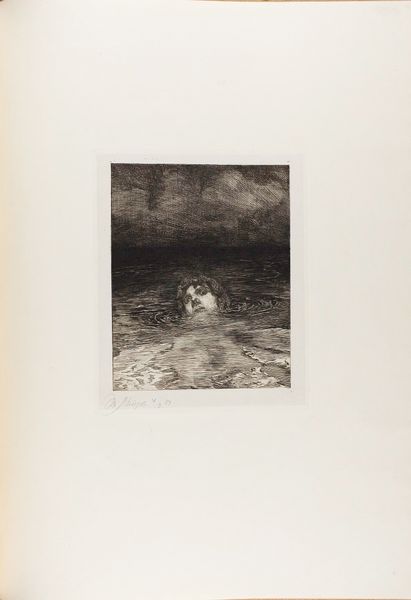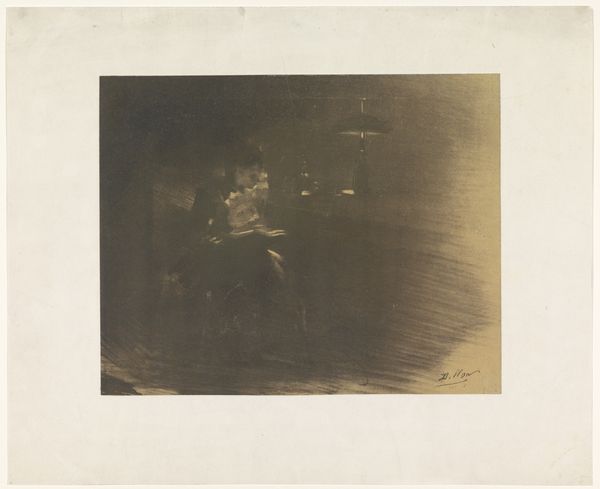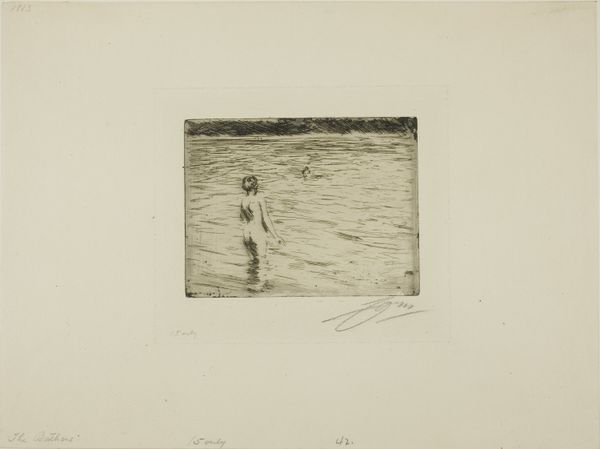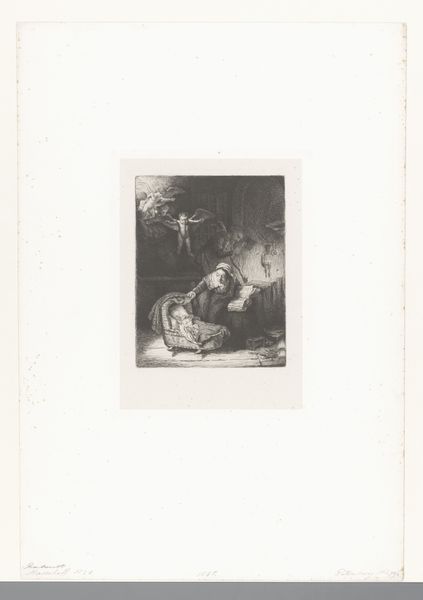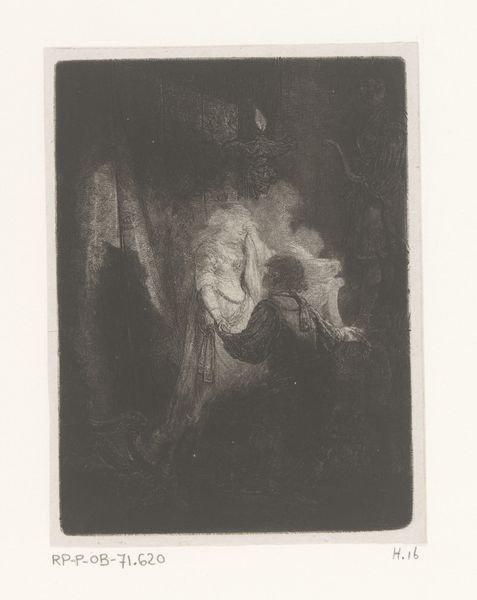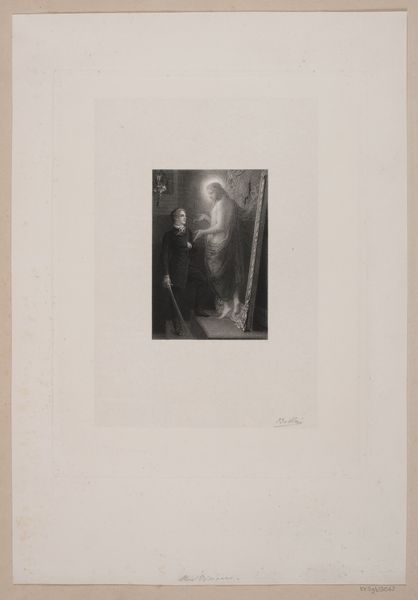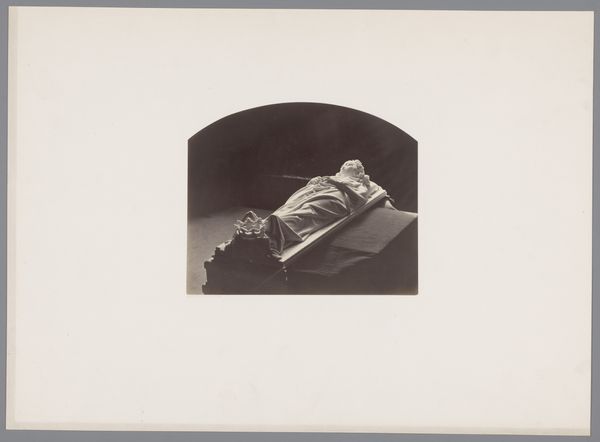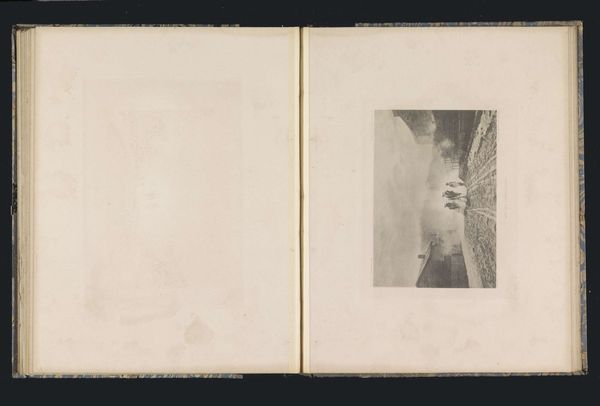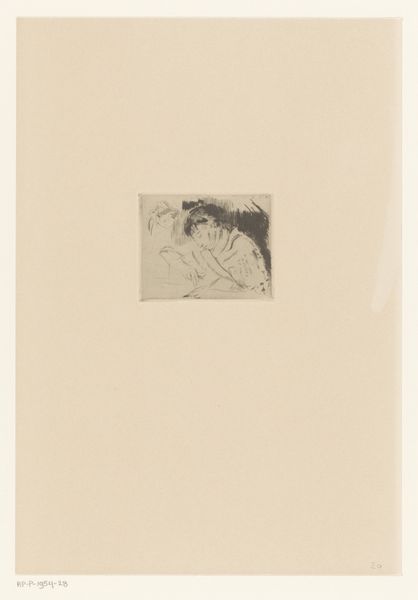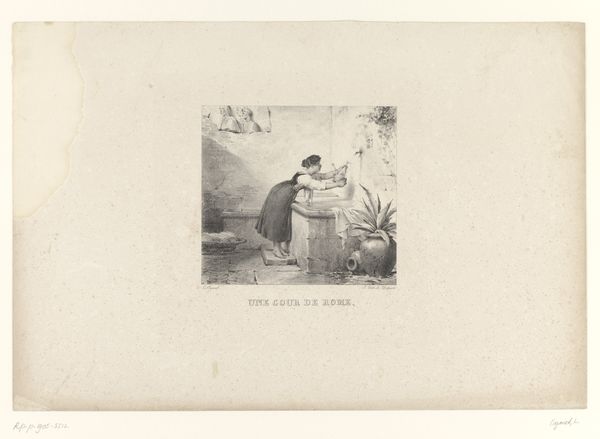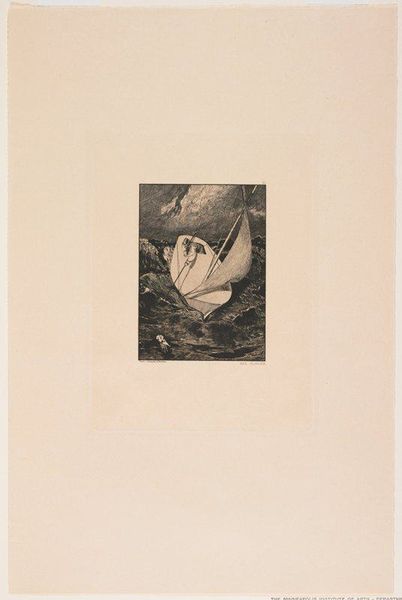
print, engraving
# print
#
landscape
#
figuration
#
romanticism
#
history-painting
#
nude
#
engraving
Dimensions: height 335 mm, width 495 mm
Copyright: Rijks Museum: Open Domain
Editor: So, here we have Monanteuil's "Drowned Woman During the Flood," an engraving from 1824. There's this overwhelming sense of tragedy and vulnerability. What's your take on it? Curator: The print offers a striking, perhaps unsettling, glimpse into the production of Romantic fantasies. We should consider the engraving process itself – the labor involved in translating an idea into a repeatable image. This process, a form of industrialized art-making, democratized the image, enabling its broad dissemination and potentially influencing public perception of idealized female vulnerability in the face of natural disasters. Editor: Democratization of an image, that's interesting. How does that relate to the materiality of the work? Curator: The paper, the ink, the tools used for engraving – these are the material conditions that allowed this image, and its ideology, to circulate. Furthermore, the print, by its very nature, becomes a commodity, consumed by a burgeoning middle class eager for vicarious emotional experiences, hinting perhaps, at a capitalist consumption of tragedy. Where was such an artwork likely viewed? Editor: Perhaps displayed in domestic settings, reinforcing those ideas within the household? It gives a completely different perspective than thinking of it just as a romantic scene of despair. Curator: Precisely. It makes us think about the power dynamics embedded in both the depicted scene and its means of production. These elements – the raw materials, the process, the labor, and the consumption – shape how we read the image. Editor: This has given me a new way to appreciate art's complex relationship to material realities. It’s certainly far more than meets the eye at first glance. Curator: Indeed. Paying attention to the tangible origins allows us to connect the image to a specific time, place, and social structure.
Comments
No comments
Be the first to comment and join the conversation on the ultimate creative platform.
